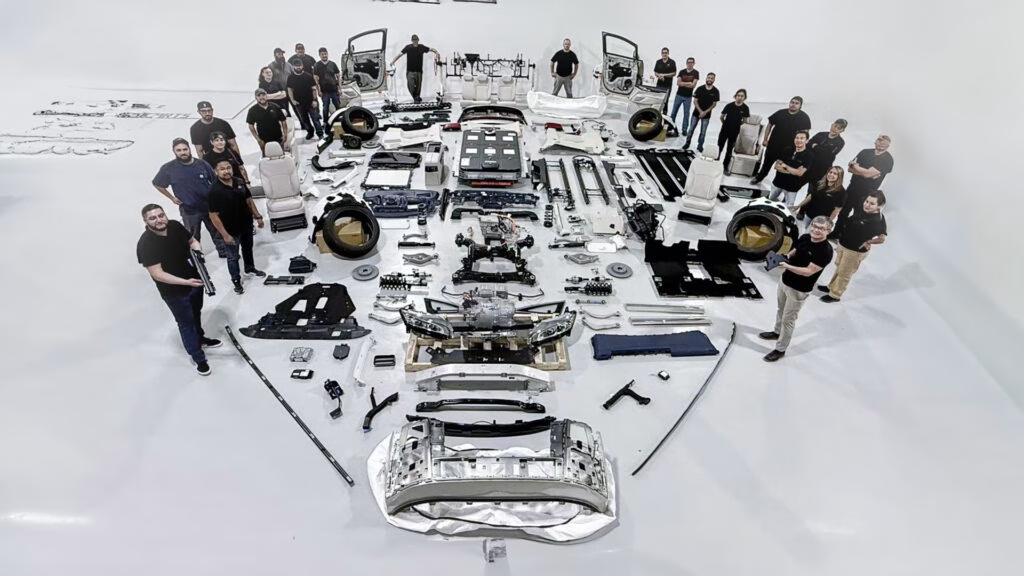What’s Really Going On With Faraday Future’s FX Super One Minivan?
Faraday Future isn’t a name you hear every day—unless you’re deep into the electric vehicle scene or have a soft spot for underdog stories. Yet, against all odds, the company is making headlines again with the FX Super One, a luxury minivan that’s just entered trial production. Yes, a minivan. But not just any minivan: this one’s loaded with AI, interactive tech, and a bold ambition to shake up the luxury people-mover market.
Why Is Faraday Future Betting Big on a Luxury Minivan?
It’s a fair question. For years, Faraday Future seemed to survive more on hype than hardware, with only 16 production cars built since its founding over a decade ago. Recent financials haven’t exactly inspired confidence either—Q1 saw just two vehicles delivered and a $44 million loss. So why double down on a segment dominated by SUVs and crossovers?
The answer lies in a strategic pivot. Instead of chasing the ultra-luxury, low-volume market, Faraday Future is aiming for broader appeal. The FX Super One is designed to go head-to-head with heavyweights like the Cadillac Escalade, but with a twist: it’s a minivan with high-tech flair and a focus on passenger experience. The company is betting that families and executives alike are ready for something different—something that blends comfort, tech, and a dash of showmanship.
What Makes the FX Super One Stand Out From the Crowd?
Let’s talk features. The headline grabber is the F.A.C.E. system, which stands for Front AI Communication Ecosystem. Imagine a digital display on the front of your car that can interact with pedestrians and other drivers—think messages, warnings, maybe even emojis. It’s a concept that’s been teased in the industry for years, but Faraday Future is actually building it into a production vehicle.
Under the skin, the FX Super One shares its platform with the Wey Gaoshan minivan from Great Wall Motors, a major Chinese automaker. But Faraday Future insists it’s not just a rebadge job. The real magic, they claim, is in the software: the EAI Embodied Intelligence AI Agent 6×4 Architecture. This system manages everything from the F.A.C.E. display to infotainment and driver assistance, aiming to create a seamless, intuitive experience for everyone on board.
Is This Just Hype, or Will the FX Super One Actually Hit the Road?
Here’s where things get real. Trial production is a significant milestone, but it’s not the same as full-scale manufacturing. Faraday Future is using this phase to iron out processes, optimize workflows, and set quality benchmarks. There’s still a mountain to climb: engineering validation, crash testing, and regulatory approvals all lie ahead. If you’re hoping to buy one soon, patience is key.
Industry analysts remain skeptical, and with good reason. The EV market is littered with ambitious startups that never quite made it to mass production. Still, Faraday Future’s persistence is noteworthy. By shifting focus to a more practical, tech-forward vehicle, they’re at least giving themselves a fighting chance. According to a 2023 report from the International Energy Agency, global EV sales are expected to hit 17 million units this year, up from 14 million in 2023. That’s a massive market, and even a small slice could be transformative for a company like Faraday Future.
How Does the FX Super One Compare to Rivals Like the Escalade?
On paper, the FX Super One is gunning for the same buyers who might consider a Cadillac Escalade or a Mercedes-Benz V-Class. But instead of brute force and chrome, it’s offering digital smarts and a futuristic vibe. The F.A.C.E. system is genuinely novel, and if it works as promised, it could set a new standard for vehicle-to-everything (V2X) communication.
Of course, luxury buyers expect more than just flashy tech. Ride quality, interior comfort, and after-sales support all matter. Faraday Future will need to prove it can deliver on these fronts—especially given its rocky track record. Still, the idea of a minivan that feels more like a rolling smart device than a traditional people-mover is intriguing. If nothing else, it’s a bold play in a segment that’s overdue for disruption.
What’s Next for Faraday Future—and Should You Care?
If you’re an EV enthusiast, a tech lover, or just someone who roots for the underdog, the FX Super One is worth watching. The road ahead is long, and there are no guarantees. But Faraday Future’s willingness to rethink what a luxury vehicle can be—and who it’s for—deserves some credit.
The big takeaway? Reinventing the minivan isn’t about perfection—it’s about smarter adjustments. Start with one change this week, and you’ll likely spot the difference by month’s end. Sometimes, that’s all it takes to turn a long shot into a contender.

